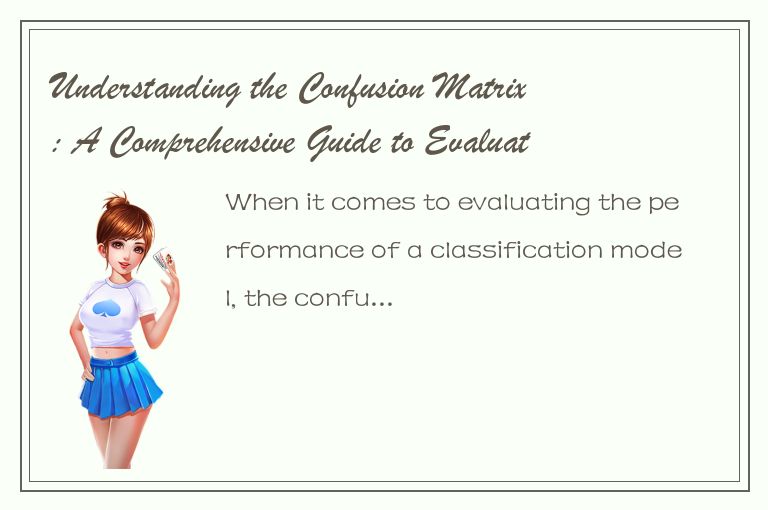When it comes to evaluating the performance of a classification model, the confusion matrix is a powerful and widely used tool. It provides a detailed breakdown of the model's predictions in terms of true positives, true negatives, false positives, and false negatives. In this article, we will explore the confusion matrix in-depth and explain how it can be used to assess the accuracy and effectiveness of a classification model.
What is the Confusion Matrix?

The confusion matrix is a table that is used to evaluate the performance of a classification model. It shows the number of true positives (TP), false positives (FP), false negatives (FN), and true negatives (TN) that are produced by the model. The matrix is typically presented in a 2x2 format, with the predicted classes along one axis and the actual classes along the other axis.
Here is an example of a confusion matrix:
| | Predicted: Positive | Predicted: Negative |
|---|---|---|
| Actual: Positive | True Positive (TP) | False Negative (FN) |
| Actual: Negative | False Positive (FP) | True Negative (TN) |
To better understand what each of these terms mean, let's break down the confusion matrix into its individual components.
True Positive (TP): These are the cases in which the model correctly predicted a positive outcome. For example, a medical diagnostic tool that correctly identifies a patient with a particular disease would be considered a true positive.
False Positive (FP): These are the cases in which the model incorrectly predicted a positive outcome. For example, a medical diagnostic tool that erroneously identifies a healthy patient as having a disease would be considered a false positive.
False Negative (FN): These are the cases in which the model incorrectly predicted a negative outcome. For example, a medical diagnostic tool that fails to identify a patient with a disease would be considered a false negative.
True Negative (TN): These are the cases in which the model correctly predicted a negative outcome. For example, a medical diagnostic tool that correctly identifies a healthy patient as not having a disease would be considered a true negative.
Evaluating Performance with the Confusion Matrix
Now that we know the individual components of the confusion matrix and what they represent, let's explore how it can be used to evaluate the performance of a classification model.
Accuracy: This is the most commonly used metric for evaluating a classification model. It represents the proportion of cases that were correctly classified. The accuracy can be calculated using the following formula:
Accuracy = (TP + TN) / (TP + FP + FN + TN)
Precision: This metric represents the proportion of true positives among all predicted positive cases. It can be used to assess the model's ability to correctly predict the positive cases without incorrectly labeling negative cases as positive. Precision can be calculated using the following formula:
Precision = TP / (TP + FP)
Recall or Sensitivity: This metric represents the proportion of true positives among all actual positive cases. It can be used to assess the model's ability to correctly identify all positive cases. Recall can be calculated using the following formula:
Recall = TP / (TP + FN)
F1 Score: This is a harmonic mean of precision and recall, and it can be used to evaluate the model's overall performance. The F1 score can be calculated using the following formula:
F1 Score = 2 * (Precision * Recall) / (Precision + Recall)
Using the Confusion Matrix in Model Selection
In addition to evaluating the performance of an existing model, the confusion matrix can also be used to compare different models to choose the best one. When comparing models, the most commonly used metric is accuracy. However, in some cases, precision and recall may be more important. For example, in a medical diagnosis scenario, false negatives (i.e., failing to detect a disease) can be more costly than false positives (i.e., unnecessarily diagnosing a healthy person as sick). In such cases, the recall would be a more important measure to focus on than accuracy.
Conclusion
The confusion matrix is a powerful tool for evaluating the performance of a classification model. It provides a detailed breakdown of the model's predictions, allowing for a more comprehensive assessment of its strengths and weaknesses. Understanding the individual components of the matrix, such as true positives and false negatives, is key to interpreting the results accurately. By using the confusion matrix in combination with other metrics such as accuracy, precision, recall, and F1 score, we can gain a better understanding of the model's performance and make informed decisions when selecting a model for a given task.




 QQ客服专员
QQ客服专员 电话客服专员
电话客服专员